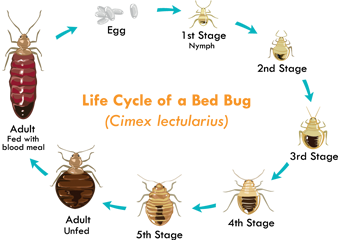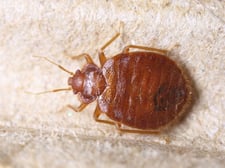Kinds Of Pest Control: Which Approach Is Right for Your Invasion?
When encountered with a parasite infestation, the selection of a proper approach for pest control is important in properly taking care of the situation. From chemical therapies to biological services, there exists a variety of approaches that can be used to address different sorts of pests. Each technique includes its own set of benefits and considerations, making the decision-making procedure a nuanced one. Comprehending the subtleties of each technique and assessing their compatibility with the details pest infestation handy is important for achieving long-term success in insect administration. By checking out the various kinds of pest control approaches available, people can make educated decisions tailored to their unique conditions, guaranteeing a much more reliable and lasting result in insect removal.
Chemical Bug Control
Chemical insect control entails making use of synthetic or normally derived chemicals to handle and eradicate pest populaces successfully. This method is frequently utilized in agriculture, forestry, and household settings to battle a wide variety of bugs, consisting of insects, rats, and weeds. The usage of chemical pesticides can provide quick and targeted remedies to pest infestations, making it a preferred choice for lots of people and companies.
Among the key benefits of chemical insect control is its capability to promptly eliminate insects, reducing the threat of damages to plants, residential or commercial property, and human health. By utilizing details chemicals that target particular insects, this technique can properly control invasions while decreasing harm to useful microorganisms and the setting when used properly.
However, using chemical parasite control also raises issues about potential unfavorable impacts on non-target types, water sources, and human health and wellness. It is crucial to comply with security guidelines, apply chemicals responsibly, and consider alternate pest control approaches to minimize these risks and ensure sustainable parasite monitoring techniques.
Organic Bug Control
Organic insect control, additionally called biocontrol, uses living organisms to manage and lower parasite populaces naturally. This method harnesses the power of nature to control parasites without the demand for artificial chemicals. Biocontrol can include the introduction of all-natural opponents of the insect species, such as pathogens, bloodsuckers, or predators, to subdue insect populations. By utilizing the bug's natural predators or microorganisms, biological insect control offers a sustainable and ecologically friendly solution to pest management.

Mechanical Pest Control
Utilizing physical and manual methods to handle parasite populaces, mechanical insect control offers an alternative approach that does not depend on making use of living organisms or artificial chemicals. This technique involves using obstacles, catches, or other gadgets to physically discourage or remove parasites. By blocking insect access factors or setting up traps to catch them, mechanical pest control can effectively minimize invasions without presenting chemicals into the setting.
One common example of mechanical parasite control is the usage of mesh screens on doors and windows to stop insects from getting in buildings. This simple yet reliable technique functions as a physical obstacle, keeping parasites out while permitting proper air flow. Additionally, tools like mousetraps, fly swatters, and ultrasonic repellents drop under the mechanical pest control classification.
While mechanical insect control techniques can be labor-intensive and require normal tracking and upkeep, they provide a lasting and eco-friendly service for handling insect problems. By incorporating various mechanical methods, property proprietors can produce a thorough insect control method that lessens dependence on chemical pesticides.
Physical Insect Control

Some usual physical parasite control techniques include making use of barriers such as screens or internet to stop parasite entrance, catches to capture and eliminate bugs, and hand-picking to literally remove bugs from plants or frameworks. In addition, strategies like heat therapies can be used to control bugs like bed insects by raising the temperature to degrees that are deadly to the insects.
Physical bug control is specifically useful in incorporated pest administration (IPM) strategies, where numerous insect control techniques are combined for efficient bug administration while decreasing using chemicals. By using physical parasite control strategies, individuals can successfully deal with bug invasions with minimal ecological impact.
Integrated Bug Monitoring
When carrying out physical bug control techniques as part of insect monitoring strategies, Integrated Pest Management (IPM) arises as an extensive method that leverages various strategies to efficiently regulate pest populations. IPM concentrates on long-term prevention of bugs through a combination of organic, social, physical, and chemical tools customized to specific insect issues. useful reference By incorporating multiple control techniques, IPM intends to decrease the dangers associated with bugs while additionally decreasing reliance on chemical remedies.
One key facet of IPM is the emphasis on tracking and examining pest populaces to determine the most suitable control techniques. This proactive method enables very early treatment and targeted strategies, resulting in a lot more effective bug monitoring. Additionally, IPM promotes environmentally friendly practices by prioritizing non-chemical control methods and only using pesticides as a last hope.
Verdict

By utilizing the parasite's natural killers or virus, biological insect control uses a environmentally friendly and sustainable solution to pest administration. - Kings cincinnati pest control companies
Utilizing hands-on and physical approaches to manage bug populaces, mechanical parasite control supplies an alternative approach that does not rely on the use of living organisms or synthetic chemicals.An effective approach to handling parasite populaces without counting on chemical termite treatment or organic approaches involves the use of physical bug control methods.When carrying out physical bug control techniques as part of insect administration techniques, Integrated Pest Monitoring (IPM) arises as a thorough strategy that leverages numerous methods to successfully manage pest populations. Chemical pest control involves the usage of chemicals, biological parasite control uses natural predators, mechanical pest control involves physical obstacles, physical bug control consists of trapping or eliminating insects, and integrated pest monitoring integrates multiple approaches for an all natural technique to pest control.